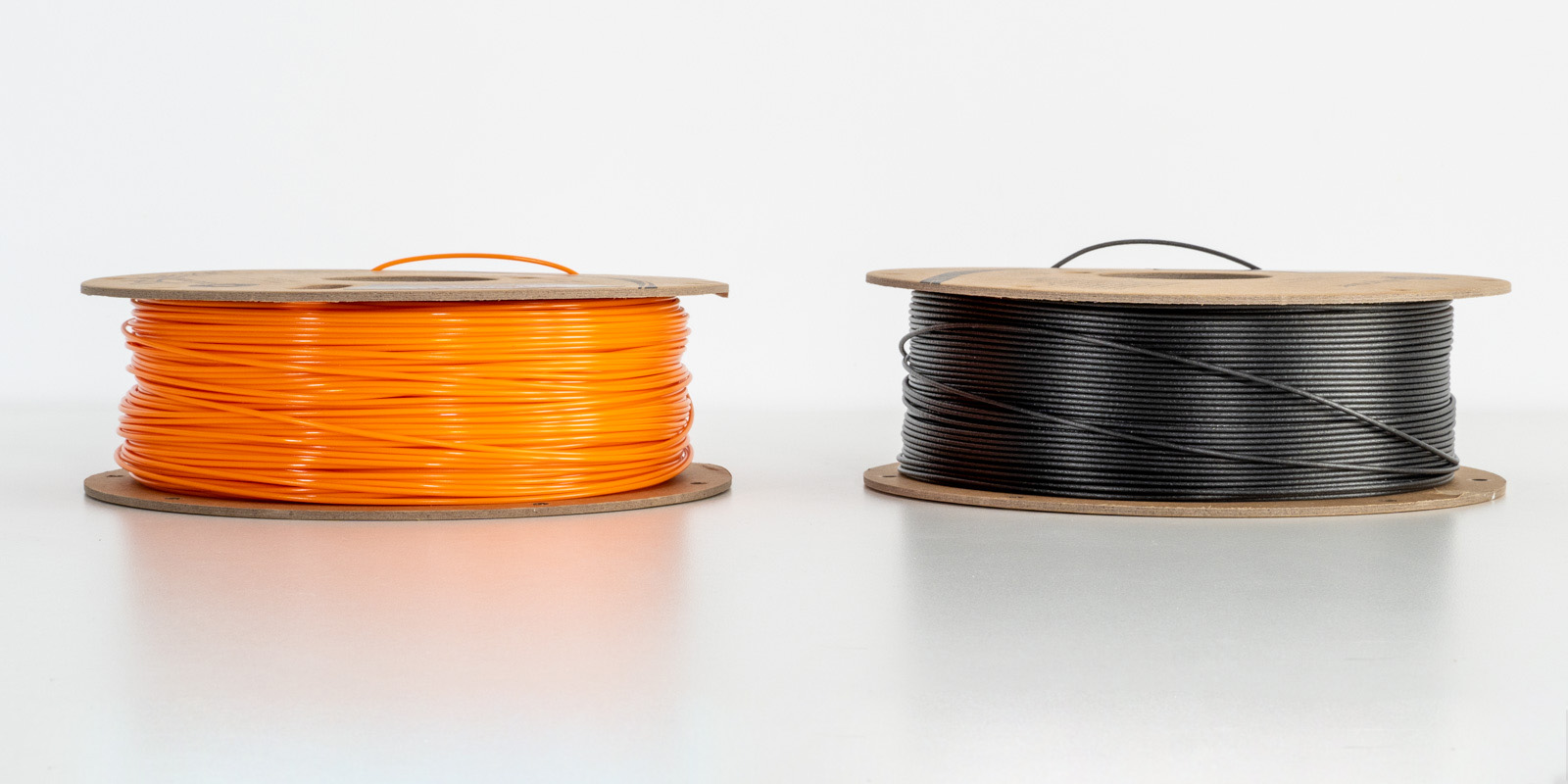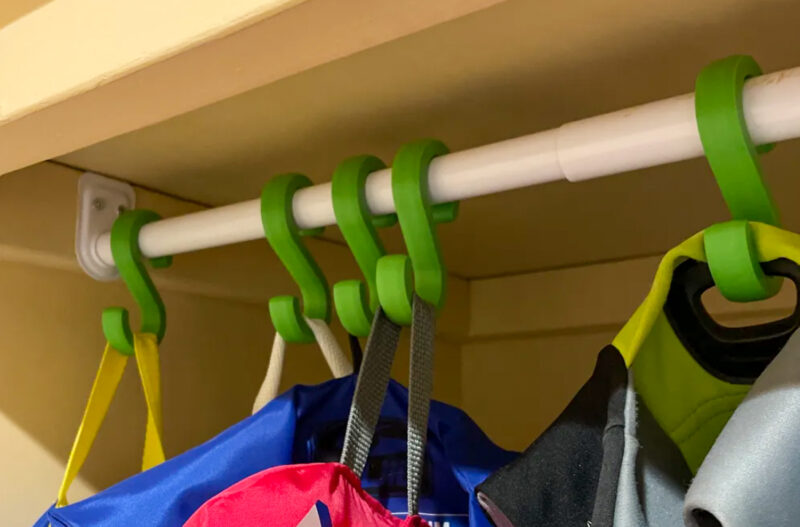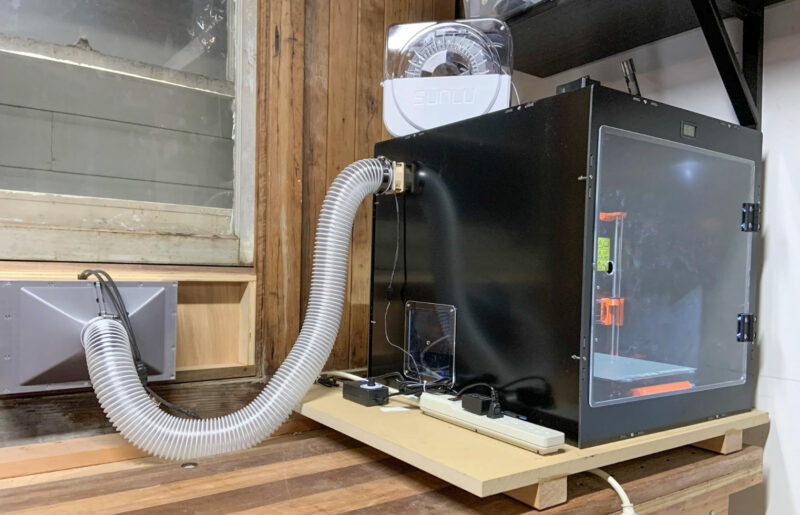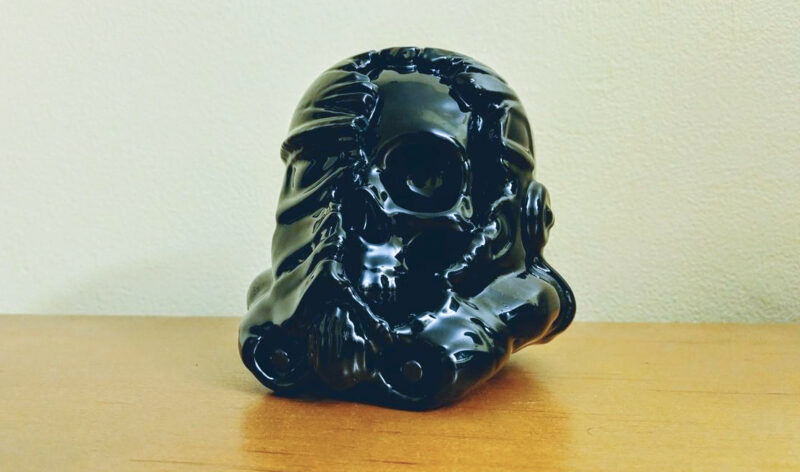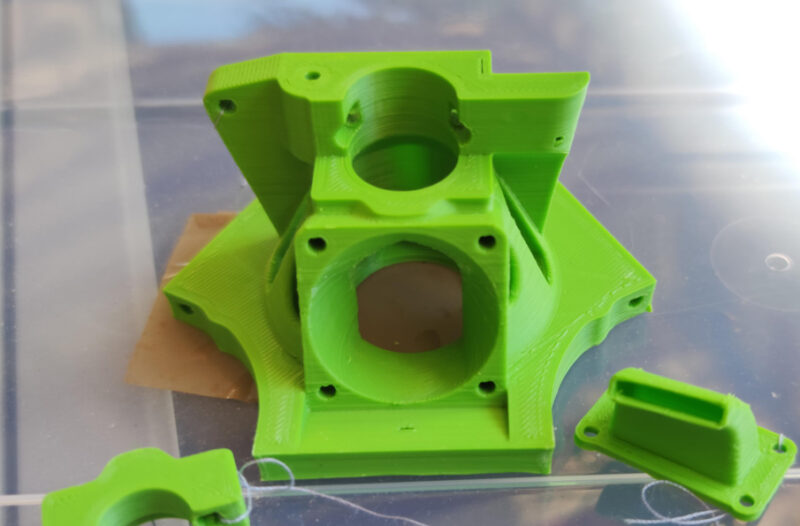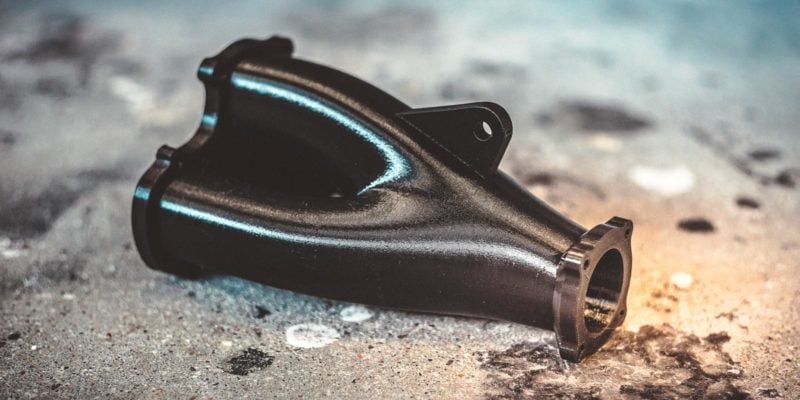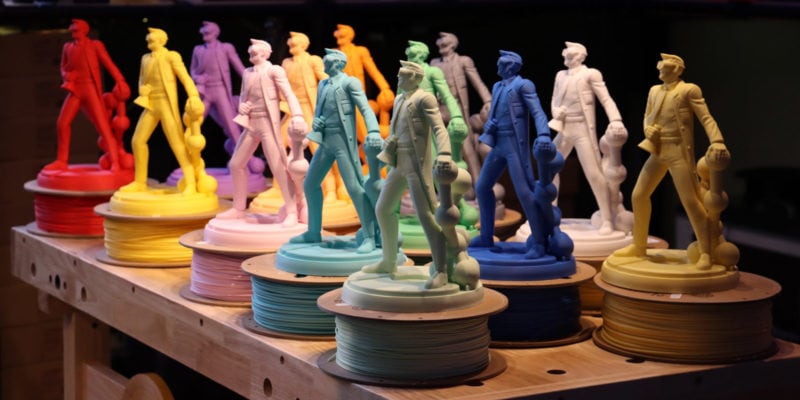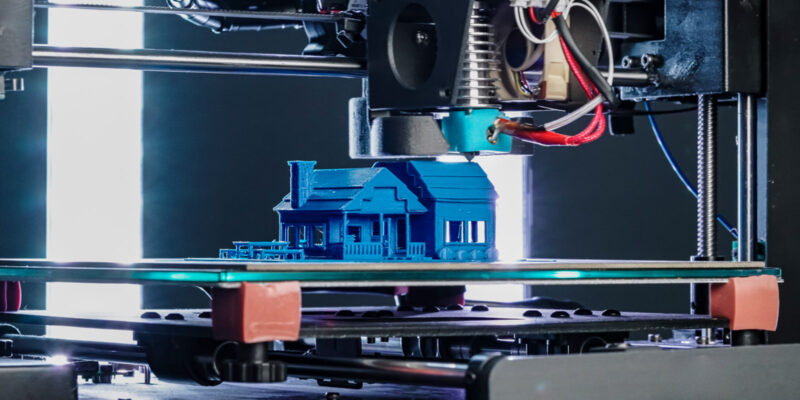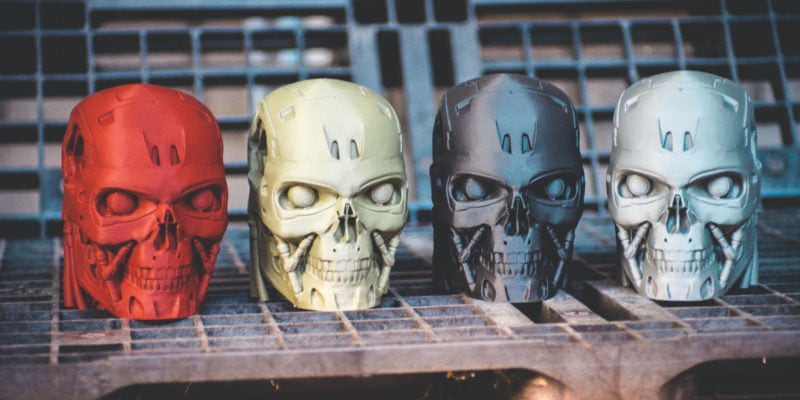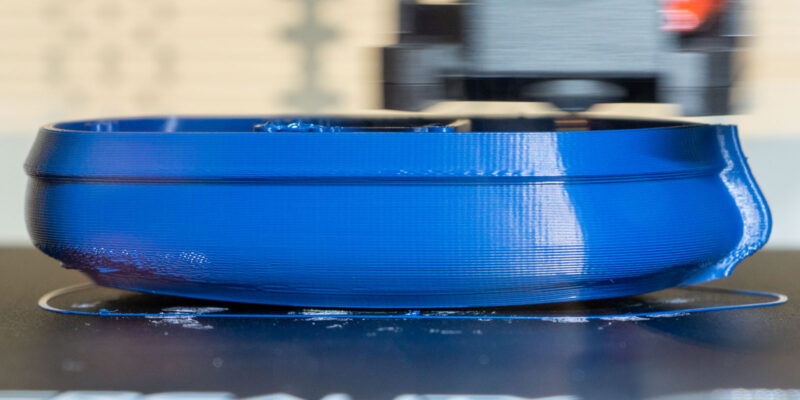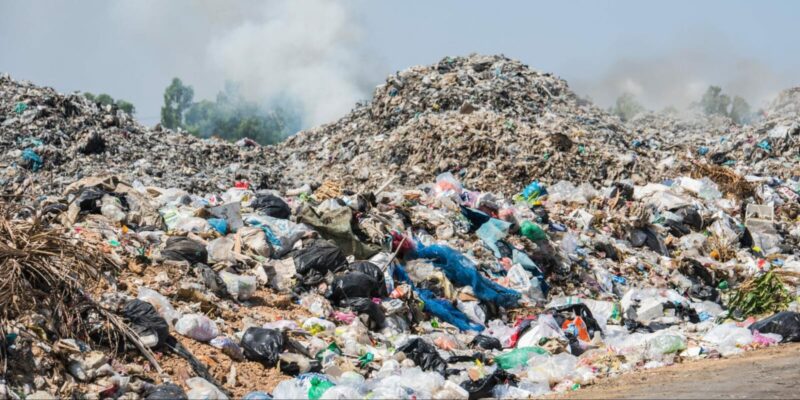ABS and ASA are two very popular 3D printable filament materials, known for their exceptional strength and post-processing compatibility. While these two thermoplastics have similar names and are used for similar applications, the filaments are far from the same.
ASA filament costs slightly more than ABS and is a bit less heat resistant. However, ASA tends to be easier to print, with minimal warping and curling. Plus, ASA boasts better UV and chemical resistance, making it the preferred choice for printing functional outdoor parts.
In this article, we’ll dive into the key differences between ASA vs ABS. From their physical properties, printing performance, and post-processing needs. After reading, you’ll know exactly which filament to pick for your projects!
What Are ASA and ABS?
Acrylonitrile Styrene Acrylate (ASA) and Acrylonitrile Butadiene Styrene (ABS) are two thermoplastic materials commonly used in 3D printing filament. While these plastics share two out of three monomers in their name, ABS and ASA are distinctly different.
ABS is the older of the two plastics. It was patented in 1948 out of the need for a strong, dependable polymer during the World War II era. Commercialized in the ‘50s, you can find ABS plastic in many household items, from LEGO bricks to computer parts.
ABS was eventually brought to the 3D printing industry in the ‘90s, where it served as a useful filament material for making strong, chemically resistant parts.
On the other hand, ASA was invented 22 years after ABS (1970) by BASF, a German industrial chemical company that’s still around today. ASA was primarily designed as a stronger, more-weather-resistant alternative to ABS plastic.
While ASA is still significantly less widely used than ABS, it’s becoming increasingly popular as more people are taking note of its enhanced properties. Nowadays, you can find ASA in outdoor patio furniture, electronic boxes, small automotive parts, functional prototypes, and, of course, 3D printing filament.
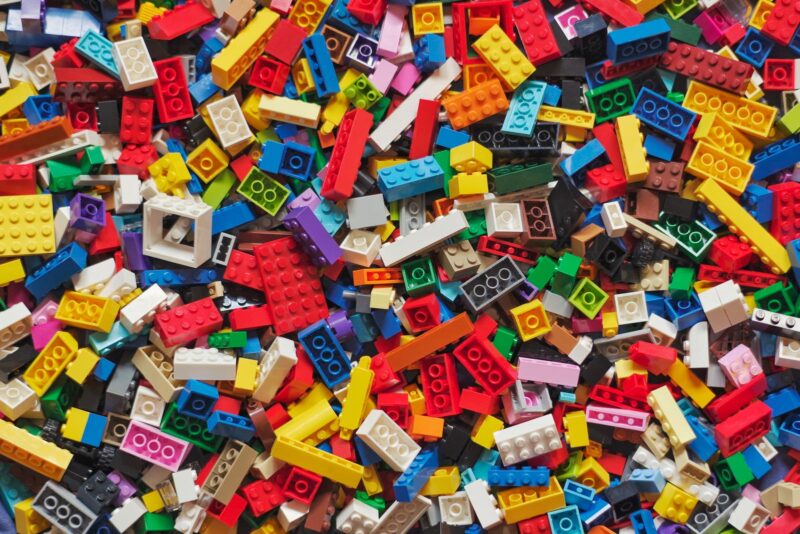
Comparing ASA vs ABS
Given the natural similarities between the monomer composition of ASA vs ABS, the two plastics function similarly compared to other 3D printing plastics like PETG and PLA filament. However, there are still many important differences between ABS vs ASA, which we’ve explained in the sub-sections below:
UV Resistance
UV resistance describes how well a material can withstand ultraviolet rays, such as those from the sun. As you can imagine, this is important when 3D printing outdoor parts.
ABS isn’t very UV resistant, and ABS 3D prints are known to lose their strength and color (“yellowing”) when exposed to UV radiation for excessive periods of time.
On the other hand, ASA is more UV resistant than ABS, as this was one of the key concerns BASF had when engineering the material.
As such, ASA is naturally a much better filament material for printing outdoor parts. If you’re looking to 3D print grill accessories or bike parts, ASA is the superior choice due to its increased UV stability.
Warping
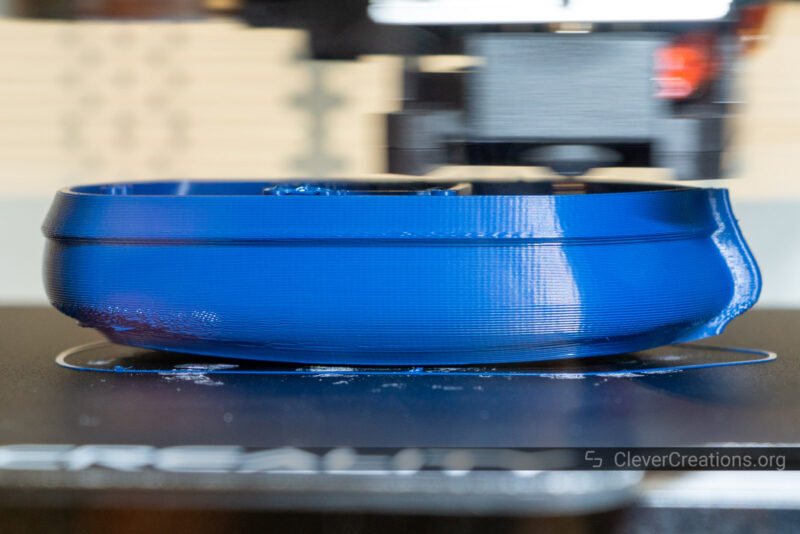
If you have used a 3D printer, you’ve probably heard of warping, the print quality issue that causes the first layer to lift off the print bed. It results in an uneven and dimensionally inaccurate print and is one of the more frustrating things to deal with in 3D printing.
Warping can occur when printing just about any filament material, but it’s especially prevalent when printing ABS filament. ABS warping is a common problem that 3D printing enthusiasts have to deal with due to the material’s inherent sensitivity to temperature changes.
This trait makes printing ABS much more challenging, as you might have to make some adjustments to your slicer settings, such as lowering the fan speed or adding a brim or raft.
While warping is still an issue with ASA filaments, it’s considered less likely to happen. That’s because ASA has a higher glass transition temperature and a lower shrinkage rate than ABS filament, which reduces the chances and severity of warping for 3D prints.
Mechanical Strength
When it comes to mechanical strength, the difference between ASA vs ABS is small, though both are exceptionally stronger than PLA. If you crunch the numbers across tensile, flexural, and impact strength, ASA is slightly stronger than ABS.
While we could bore you with a discussion of the individual strength values of these materials, here’s a comparison chart instead:
| Strength Type | ASA | ABS |
|---|---|---|
| Tensile strength | 38-48 MPa | 35-45 MPa |
| Impact strength | 3.5-4.5 kJ/m² | 3-4 kJ/m² |
| Flexural strength | 50-60 MPa | 45-55 MPa |
| Shore hardness | 85-95D | 80-90D |
As you can see, ASA filament wins out in all measures of strength, but only by a small margin.
For reference, these values were pulled from the material data sheets of various popular ASA and ABS filaments, such as MatterHackers Build Series ABS, Prusament ASA, and more.
It’s important to note that both ABS and ASA are great filament materials for printing high-strength models. But, as one in-depth research study points out, ASA will usually produce parts that are slightly stronger with better weather resistance.
Rigidity/Stiffness
Both ASA and ABS are considered relatively rigid and stiff plastics. This is predominantly due to the monomer, Styrene, which is a part of both plastics and is known to provide rigidity.
By the numbers, though, ASA is more rigid than ABS due to ASA’s higher tensile strength and flexural strength. This indicates that parts made with ASA filament won’t bend as much before breaking compared to ABS prints, which have a bit more flexibility.
However, the difference in rigidity between ABS vs ASA is minimal. Both of these filament materials can adequately be used to 3D print parts that require rigidity. Think mounting brackets, hooks, and other structural components.
Temperature Resistance
Temperature resistance is another important aspect of filament materials, especially if you plan on 3D printing a part that will go outside or in a hot environment, such as an engine well. The general rule of thumb for gauging a filament material’s temperature resistance is to look at the recommended heated bed temperature.
The recommended bed temperature for a filament is usually set at around the material’s glass transition temperature, which is the point at which a material softens. For ABS, this is roughly 95-105 °C, just a tad bit higher than ASA, which can only withstand heat up to around 90-95 °C.
As such, ABS is the better option in a high-temperature environment for parts that must persist and hold their shape.
Smells, Fumes & Safety
Unfortunately, both ASA and ABS filaments are not known for their safety or lack of smell. 3D printing either ABS or ASA releases toxic fumes into the air and leaves a characteristic, unpleasant smell in the space around your 3D printer.
However, according to a government research study about 3D printing emissions, ASA produces harmful fumes at a much slower rate than ABS when 3D printed. ABS’s toxicity is well-documented, but it’s still worth going over both ABS and ASA fumes.
When ABS and ASA aren’t toxic in their solid form, melting these materials releases dangerous volatile organic compounds (VOCs) and ultrafine particles (UFPs).
While a few ABS or ASA 3D prints likely won’t cause you any harm, prolonged exposure to these fumes can cause a plethora of health issues. Breathing trouble, eye irritation, headaches, nausea, and more are all hazards you expose yourself to if you don’t take proper precautions.
With this in mind, it’s a good idea to use an enclosed 3D printer when printing ASA or ABS filament. Additionally, it’s recommended to ventilate fumes from the 3D printer enclosure outside so you never come into contact with them.
Post-Processing
Post-processing is one of the only categories that ASA and ABS plastic don’t really differ on. Both materials are soluble in acetone (nail polish remover), meaning you can layer smooth 3D prints made in these materials by applying acetone (vapor or liquid) to the surface of your model.
It’s worth noting that ASA is minisculely more chemically resistant than ABS, including with acetone. As such, acetone smoothing ASA 3D prints can take slightly longer than smoothing ABS prints.
Besides this minute difference, though, the post-processing procedures for both of these materials are the same. And you can use basically any generic post-processing technique. Sanding, priming, painting, and polishing, the sky is the limit.
Material Properties
Lastly, let’s cover the differences in mechanical properties of ASA vs ABS that we haven’t already covered. The chart we made below encompasses many noteworthy properties of these two materials that you might want to know, such as the printing temperature and elongation at break.
| Property | ASA | ABS |
|---|---|---|
| Elongation at Break | 1-2% | 2-4% |
| Density | 1.14-1.16 g/cm³ | 1.04-1.10 g/cm³ |
| Shrinkage | 0.4-0.7% | 0.7-1.6% |
| Water Tightness | Good | Good |
| Nozzle Temperature | 240-260 °C | 210-250 °C |
| Bed Temperature | 90-110 °C | 80-110 °C |
| Print Speed | 30-60 mm/s | 30-60 mm/s |
| Price (per 1-kg spool) | $20-30 | $15-25 |
Is ASA Better Than ABS?
In most tests, ASA is stronger than ABS plastic by a small margin. However, it would be unfair to outright say that ASA is better than ABS, as both materials are great solutions for specific situations.
If you’re 3D printing a functional part, like a gear, where tensile strength, rigidity, and dimensional accuracy are critical, then ASA would be the better option.
But, if you’re printing a part that needs to be as temperature-resistant as possible or you want to print a functional model in a very specific color, then ABS is probably the better choice. ASA simply doesn’t come in that many colors.
Overall, the best filament material for you depends entirely on your situation. And if this ASA vs ABS comparison hasn’t given you the exact filament you are looking for, there are also plenty of other alternatives to ABS filament to check out.
Can You Use ABS Print Settings for ASA 3D Printing?
While many slicer settings for printing ABS filament carry over for printing ASA filament, there are a handful of changes that should be made to achieve successful ASA prints.
First off, the recommended nozzle temperature for your ABS filament can be different from that of your ASA. The same is true for the heated bed temperature.
Generally, ASA filaments require higher nozzle and print bed temperatures than ABS filaments, but this isn’t always true. As such, we suggest checking the recommendations for your specific filament before slicing and printing a model.
Additionally, ASA filaments typically perform better with lower print speeds than what you might be using for your ABS filaments. While there’s no one-size-fits-all speed value for printing ASA, lowering your ABS print speed by 5 or 10 mm/s is a good start. Again, the manufacturer’s recommendations will give you a good starting point.
Generally, it’s a good idea to avoid using the same slicer settings with different filament materials. Even when they are similar, as is the case with ABS and ASA. You will almost always achieve higher-quality prints when tuning your slicer settings for filaments separately.
What Are the Downsides of ASA Filament?
Though our discussion of ASA filament shines a lot of good light on the material, it’s far from perfect. There are a few noteworthy downsides, such as demanding printing requirements, higher costs, and limited (color) availability.
As we mentioned in the previous section, ASA tends to work best with higher nozzle and heated bed temperatures than ABS and other materials (e.g. PLA, PETG). While some filament manufacturers state that you don’t need a printer enclosure to print ASA, it’s still recommended.
Another downside is that ASA material filament tends to cost a few extra dollars more, per spool, than other filament materials. So while you can get a 1-kg spool of ABS or PLA filament for under $20, you’ll likely pay an extra $1-3 for an ASA equivalent.
This price difference is not something you’ll notice when only casually 3D printing. However, if you run a 3D printing business, it will affect your margins.
Finally, ASA filament is less widely available than other filament materials. Not nearly as many manufacturers produce ASA as they do PLA, ABS, and PETG. As a consequence, there are also fewer color options for ASA available compared to other materials.
Why Use One Over the Other?
You might want to use ABS instead of ASA if you’re looking to cut costs as much as possible or want more color options.
ABS filament is also slightly less expensive than the ASA, so you’ll save a few bucks per spool. Additionally, there are more color options for ABS, as more manufacturers produce ABS filament than ASA.
Of course, you might also want to use ABS filament over ASA if it’s simply more convenient. For instance, it’s much more likely that you can find fast shipping for ABS filament on Amazon than you would for ASA.
Conclusion: Should You Use ABS or ASA?
ABS and ASA are both popular 3D printing filament materials that are known for their strength, durability, and post-processing compatibility. But while these materials have similar names and materialistic properties, they are far from the same and a number of key differences make each more useful in certain situations.
If you want to save a few dollars every time you buy filament or you’re looking for a wider color palette, you’ll probably want to choose ABS. It’s more widely available and generally more affordable than ASA. Additionally, ABS filament is a slightly better option when it comes to acetone smoothing and temperature resistance.
However, if you’re looking to maximize the mechanical performance of your 3D prints, ASA filament will better suit your needs. ASA not only offers improved weather resistance and rigidity, but it also beats ABS in just about every basic strength test. On top of that, ASA is known to warp less than ABS, resulting in an easier printing experience.
